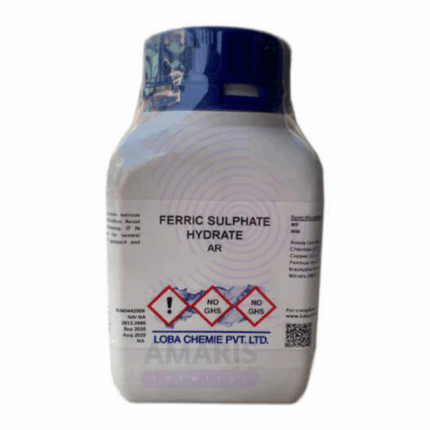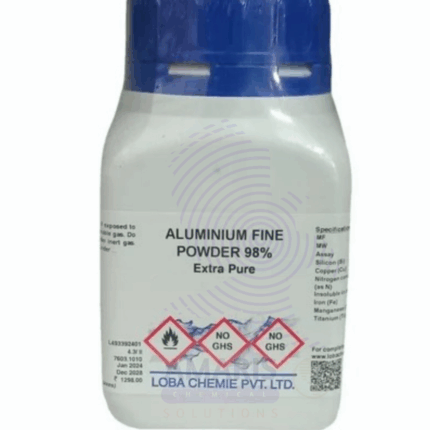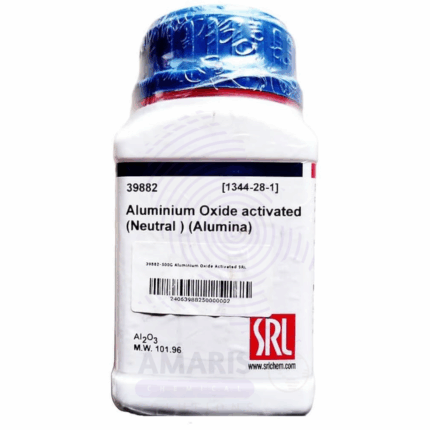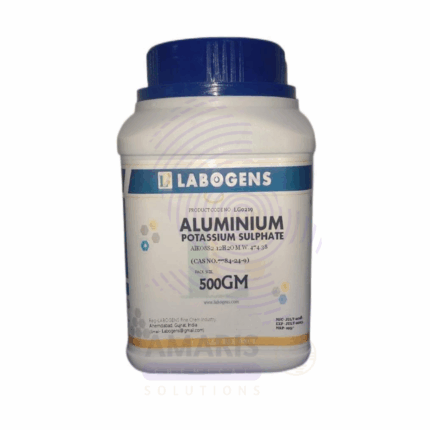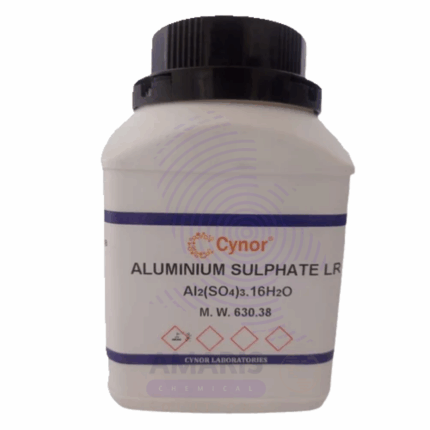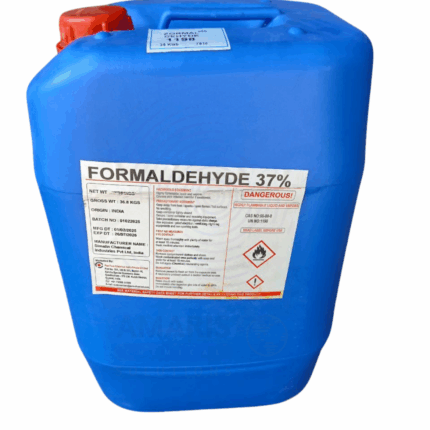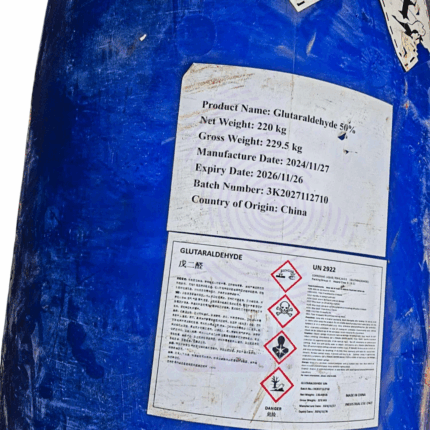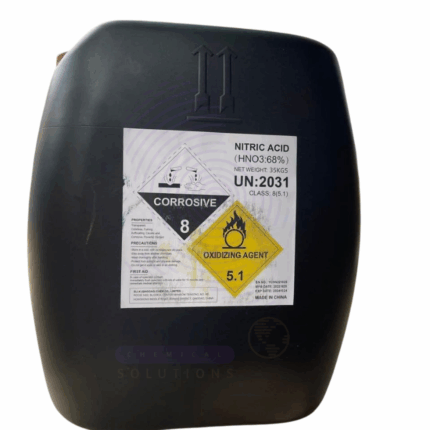
Hydrogen Peroxide Extra Pure
$ 34.35 Original price was: $ 34.35.$ 34.23Current price is: $ 34.23.
Hydrogen Peroxide Extra Pure is a clear, colorless liquid widely used as a strong oxidizing agent in laboratory and industrial settings. This high-purity grade ensures minimal contamination, making it ideal for analytical chemistry, disinfection, bleaching, and redox reactions. In research labs, it serves as a reliable reagent for oxidation processes and sterilization. Its extra pure formulation enhances consistency and accuracy in sensitive procedures. Due to its reactive and potentially unstable nature, it should be stored in cool, dark conditions in vented containers and handled with appropriate protective equipment.
Hydrogen Peroxide Extra Pure
Primary Uses
- Oxidizing Agent in Chemical Reactions:
Widely used in redox reactions, including organic synthesis, epoxidation, and hydroxylation processes. - Disinfectant and Sterilization Agent:
Serves as a high-purity antimicrobial for sterilizing laboratory equipment, surfaces, and sometimes tissue culture tools. - Environmental and Analytical Testing:
Used in chemical oxygen demand (COD) tests and as a reagent in colorimetric assays for detecting trace elements or functional groups.
Secondary Uses
- Bleaching and Stain Removal in Sample Prep:
Applied to bleach organic material in biological specimens or to remove stains during microscopic slide preparation. - Oxygen Source in Controlled Decomposition Reactions:
Decomposes to release oxygen gas, useful for oxidative degradation studies or oxygen-limited reaction environments. - Component in Fenton’s Reagent:
Combined with iron salts to produce hydroxyl radicals for advanced oxidation processes in environmental chemistry.
| PACK SIZE |
2.5 Litres Plastic bottle |
|---|
1. Basic Identification Attributes
- Product Name: Hydrogen Peroxide
- Grade: Extra Pure (Laboratory Grade)
- Chemical Formula: H₂O₂
- CAS Number: 7722-84-1
- Molecular Weight: 34.01 g/mol
- Appearance: Clear, colorless liquid
- Odor: Slightly sharp, irritating
2. Physical & Chemical Properties
- Common Lab Concentration: 30–35% w/w
- Density: ~1.11 g/cm³ (at 30%)
- Melting Point: -0.43 °C (pure)
- Boiling Point: ~150.2 °C (decomposes before boiling)
- Solubility: Completely miscible in water and alcohol
- Decomposition Products: Water and oxygen gas (O₂)
- Stability: Unstable; decomposes in presence of light, heat, or catalysts (e.g. metals)
3. Safety & Hazard Attributes
- GHS Classification:
⚠️ Oxidizing Agent, Corrosive, Irritant - Hazard Statements:
- H271: May cause fire or explosion; strong oxidizer
- H302: Harmful if swallowed
- H314: Causes severe skin burns and eye damage
- PPE Requirements:
- Chemical-resistant gloves (nitrile or neoprene)
- Safety goggles or face shield
- Lab coat
- Use in fume hood for concentrated forms
- First Aid Measures:
- Skin Contact: Rinse with water for 15 minutes
- Eye Contact: Flush with water and seek immediate medical attention
- Inhalation: Move to fresh air; medical help if symptoms persist
- Ingestion: Do not induce vomiting; seek medical attention
4. Storage & Handling Attributes
- Storage Conditions:
- Store in cool, dry, well-ventilated place
- Keep away from heat, direct sunlight, and organic/inflammable materials
- Use containers made of compatible materials (e.g., HDPE with vented caps)
- Incompatible Materials:
- Reducing agents, organic materials, metal ions, strong bases, combustible materials
- Handling Notes:
- Avoid contamination—never return unused solution to the original container
- Use non-metallic tools and clean dispensing systems
5. Regulatory & Compliance Attributes
- UN Number: UN2014 (for concentrations >40%)
- Hazard Class: 5.1 (Oxidizer)
- Packing Group: II or III (based on concentration)
- Labeling: Oxidizer and Corrosive symbols required
6. Laboratory Applications
- Primary Uses:
- Oxidizing agent in organic/inorganic synthesis
- Disinfectant and sterilizer
- Analytical chemistry for redox titrations
- Environmental testing (e.g., COD analysis)
- Secondary Uses:
- Bleaching agent in textiles and paper
- Preparation of peracids and epoxides
- Removal of trace metal contaminants
SAFETY PRECAUTIONS
Personal Protective Equipment (PPE):
- Wear lab coat, nitrile gloves, and chemical splash goggles.
- Use a face shield and work in a fume hood when handling concentrated solutions.
Handling:
- Avoid contact with skin, eyes, and clothing.
- Do not breathe vapors or mist.
- Handle with care—acts as a strong oxidizer.
- Keep away from combustible materials.
Storage:
- Store in a cool, well-ventilated, and dark area.
- Keep container tightly closed and upright.
- Avoid contamination with organic materials, metals, and reducing agents.
FIRST AID MEASURES
Inhalation:
- Move to fresh air immediately.
- Seek medical attention if symptoms like coughing or shortness of breath persist.
Skin Contact:
- Rinse with plenty of water for at least 15 minutes.
- Remove contaminated clothing.
- Seek medical advice if irritation or whitening of skin occurs.
Eye Contact:
- Rinse cautiously with water for several minutes.
- Remove contact lenses if present and easy to do.
- Continue rinsing and get immediate medical attention.
Ingestion:
- Rinse mouth thoroughly with water.
- Do not induce vomiting.
- Seek immediate medical attention.
FIRE FIGHTING MEASURES
Flammability:
- Not flammable, but decomposes to release oxygen—can intensify fires.
Extinguishing Media:
- Use water spray, foam, or dry chemical.
- Do not use combustible extinguishing agents like dry sawdust.
Hazardous Combustion Products:
- Oxygen gas, steam, and potentially explosive vapors in confined spaces.
Firefighter Protection:
- Wear self-contained breathing apparatus (SCBA) and full protective gear.
Approach with caution—containers may rupture under fire conditions.


 Preservatives(food)
Preservatives(food) Flavor Enhancers
Flavor Enhancers Acidulants
Acidulants Sweeteners
Sweeteners Antioxidants
Antioxidants Colorants(food)
Colorants(food) Nutraceutical Ingredients (food)
Nutraceutical Ingredients (food) Nutrient Supplements
Nutrient Supplements Emulsifiers
Emulsifiers
 Collectors
Collectors Dust Suppressants
Dust Suppressants Explosives and Blasting Agents
Explosives and Blasting Agents Flocculants and Coagulants
Flocculants and Coagulants Frothers
Frothers Leaching Agents
Leaching Agents pH Modifiers
pH Modifiers Precious Metal Extraction Agents
Precious Metal Extraction Agents
 Antioxidants(plastic)
Antioxidants(plastic) Colorants (Pigments, Dyes)
Colorants (Pigments, Dyes) Fillers and Reinforcements
Fillers and Reinforcements Flame Retardants
Flame Retardants Monomers
Monomers Plasticizers
Plasticizers Polymerization Initiators
Polymerization Initiators Stabilizers (UV, Heat)
Stabilizers (UV, Heat)
 Antifoaming Agents
Antifoaming Agents Chelating Agents
Chelating Agents Coagulants and Flocculants
Coagulants and Flocculants Corrosion Inhibitors
Corrosion Inhibitors Disinfectants and Biocides
Disinfectants and Biocides Oxidizing Agents
Oxidizing Agents pH Adjusters
pH Adjusters Scale Inhibitors( water)
Scale Inhibitors( water)
 Antioxidants(cosmetic)
Antioxidants(cosmetic) Emollients
Emollients Fragrances and Essential Oils
Fragrances and Essential Oils Humectants
Humectants Preservatives
Preservatives Surfactants(cosmetic)
Surfactants(cosmetic) Thickeners
Thickeners UV Filters
UV Filters
 Fertilizers
Fertilizers Soil Conditioners
Soil Conditioners Plant Growth Regulators
Plant Growth Regulators Animal Feed Additives
Animal Feed Additives Biostimulants
Biostimulants Pesticides (Herbicides, Insecticides, Fungicides)
Pesticides (Herbicides, Insecticides, Fungicides)
 Active Pharmaceutical Ingredients (APIs)
Active Pharmaceutical Ingredients (APIs) Excipients
Excipients Solvents(pharmaceutical)
Solvents(pharmaceutical) Antibiotics
Antibiotics Antiseptics and Disinfectants
Antiseptics and Disinfectants Vaccine Adjuvants
Vaccine Adjuvants Nutraceutical Ingredients (pharmaceutical)
Nutraceutical Ingredients (pharmaceutical) Analgesics & Antipyretics
Analgesics & Antipyretics
 Analytical Reagents
Analytical Reagents Solvents(lab)
Solvents(lab) Chromatography Chemicals
Chromatography Chemicals Spectroscopy Reagents
Spectroscopy Reagents microbiology-and-cell-culture-reagents
microbiology-and-cell-culture-reagents Molecular Biology Reagents
Molecular Biology Reagents Biochemical Reagents
Biochemical Reagents Inorganic and Organic Standards
Inorganic and Organic Standards Laboratory Safety Chemicals
Laboratory Safety Chemicals Specialty Laboratory Chemicals(Special Laboratory Equipment)
Specialty Laboratory Chemicals(Special Laboratory Equipment)
 Demulsifiers
Demulsifiers Hydraulic Fracturing Fluids
Hydraulic Fracturing Fluids Scale Inhibitors(oil)
Scale Inhibitors(oil) Surfactants(oil)
Surfactants(oil) Drilling Fluids
Drilling Fluids
 Dyes and Pigments
Dyes and Pigments Bleaching Agents
Bleaching Agents Softening Agents
Softening Agents Finishing Agents
Finishing Agents Antistatic Agents
Antistatic Agents
 Admixtures
Admixtures Waterproofing Agents
Waterproofing Agents Sealants and Adhesives
Sealants and Adhesives Curing Compounds
Curing Compounds Concrete Repair Chemicals
Concrete Repair Chemicals Anti-Corrosion Coatings
Anti-Corrosion Coatings
 Surfactants(cleaning)
Surfactants(cleaning) Builders
Builders Enzymes
Enzymes Solvents (Cleaning)
Solvents (Cleaning) Fragrances
Fragrances
 Electronic Chemicals
Electronic Chemicals Catalysts
Catalysts Lubricants
Lubricants Photographic Chemicals
Photographic Chemicals Refrigerants
Refrigerants Automotive chemicals
Automotive chemicals Pyrotechnic Chemicals
Pyrotechnic Chemicals
 Biodegradable Surfactants
Biodegradable Surfactants Bio-based Solvents
Bio-based Solvents Renewable Polymers
Renewable Polymers Carbon Capture Chemicals
Carbon Capture Chemicals Wastewater Treatment Chemicals
Wastewater Treatment Chemicals
 Pigments
Pigments Solvents(paint)
Solvents(paint) Specialty Coatings
Specialty Coatings Binders/Resins
Binders/Resins Additives
Additives Driers
Driers Anti-Corrosion Agents
Anti-Corrosion Agents Functional Coatings
Functional Coatings Application-Specific Coatings
Application-Specific Coatings
 Fresh Herbs
Fresh Herbs Ground Spices
Ground Spices Whole Spices
Whole Spices Spice Blends
Spice Blends Dried Herbs
Dried Herbs
 Leavening Agents
Leavening Agents Dough Conditioners
Dough Conditioners Flour Treatments
Flour Treatments Fat Replacers
Fat Replacers Decoratives
Decoratives Preservatives(baking)
Preservatives(baking)
 Plasticizers & Softeners
Plasticizers & Softeners Reinforcing Agents
Reinforcing Agents Adhesion Promoters
Adhesion Promoters Vulcanizing Agents
Vulcanizing Agents Antidegradants
Antidegradants Blowing Agents
Blowing Agents Fillers & Extenders
Fillers & Extenders Accelerators & Retarders
Accelerators & Retarders


